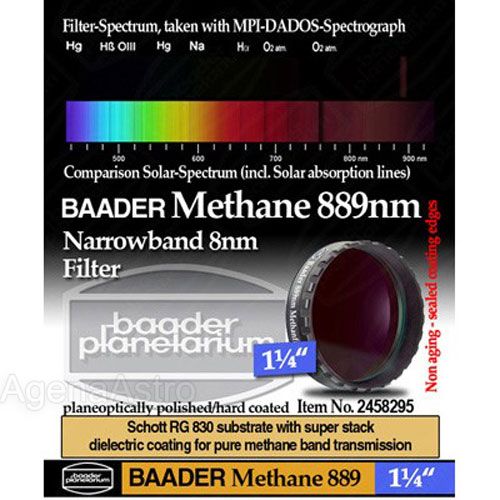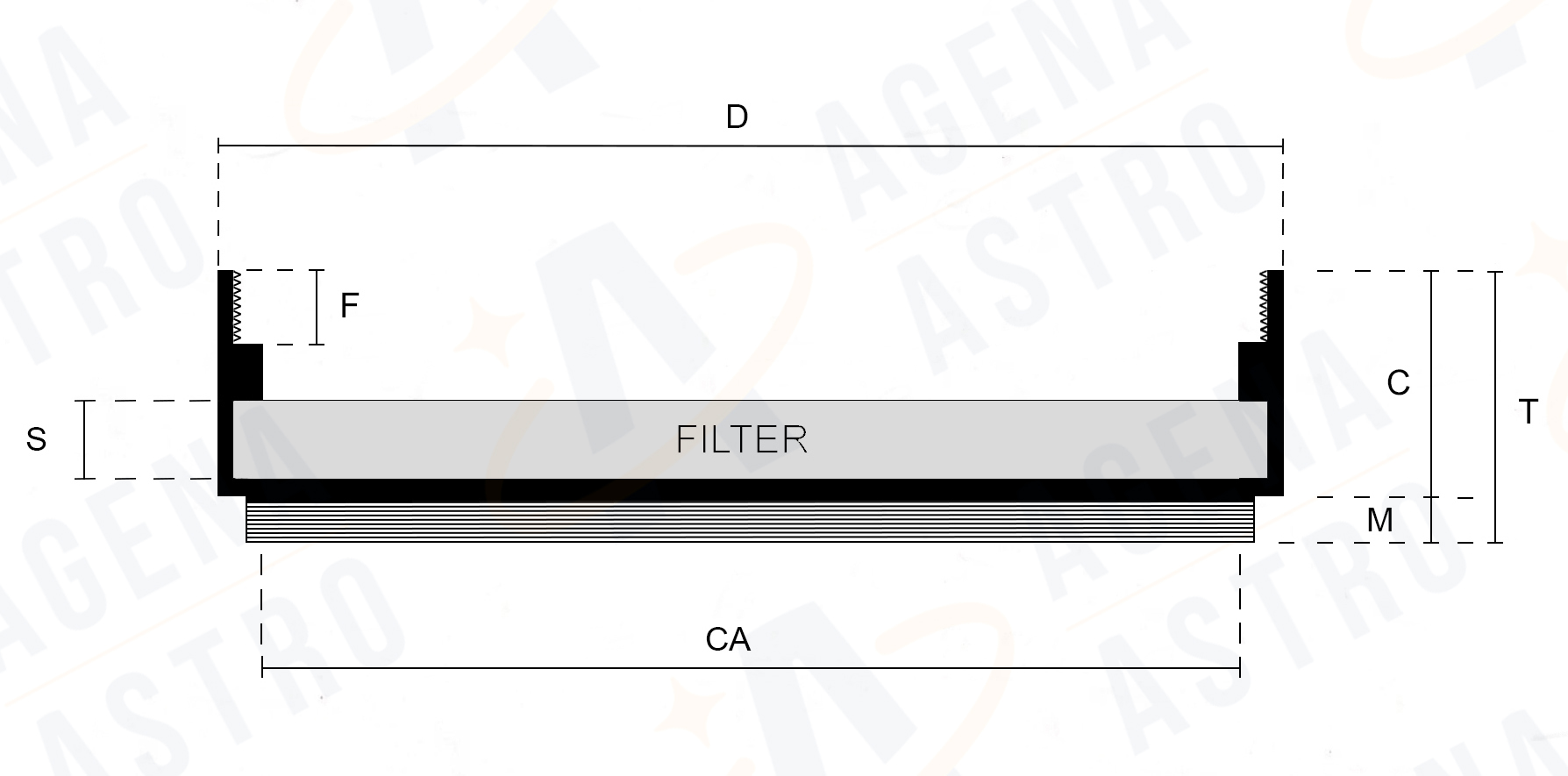Baader Methane Narrowband Filter (889nm / 8nm) - 1.25" # FMTH-1 2458295

Contiguous US Customers:
All items we sell ship for free within the Contiguous US. Shipping will be via the cheapest shipping method which will vary depending on the items in your order. During checkout, you may also be shown other optional faster shipping choices.
US Customers in Hawaii and Alaska:
Free shipping applies to almost all products. A few large telescopes and mounts are excluded from this free shipping offer. For these items, please contact us to obtain a shipping quote before you check out using the online shopping cart.
International Customers:
Free shipping does not apply to international orders. During check-out, you will be presented with several shipping choices and costs. However, the export of some items may be restricted outside the US due to size or manufacturer restrictions.
Quick Overview
- Excellent for imaging the gas giants: Jupiter, Saturn, Neptune, etc.
- Improves contrast when imaging the Sun
- Improves images in poor seeing conditions
- Precisely tuned to the spectral absorption level of methane (CH4) at 889 nanometers (nm)
- Very narrow bandpass of just 8nm
- Made of high quality Schott RG 830 glass
- Coatings dielectrically applied in a complex and precise process developed by Baader
- Mounted in a machined aluminum 1.25” cell and can be stacked with other 1.25” filters
Product Details
The highly specialized Baader Planetarium Methane (CH4) narrowband filter passes only the near infrared portion of the light spectrum centered at 889 nanometers (nm) with a very narrow bandpass of 8nm.
The filter passes the light from a gaseous object at the 889nm wavelength where methane strongly absorbs that light. Clouds containing methane scatter sunlight back away from the object. When imaging Jupiter in visible light, for example, the equatorial belts may appear white due to ammonia at the higher levels. But those same belts will appear dark when imaged in the methane (CH4) band because methane is also present in the band. Using the filter causes the features of the planet dominated by methane to have greater contrast and it makes it easier to image changes to the surface features. One of the advantages of working in red light, up into to the longer wavelengths, such as the near-infrared, is that imaging is less affected by poor seeing and images taken in these wavelengths may show finer details and higher contrast.
Because the filter darkens the methane absorption band, imaging will require slightly longer exposure times. Also, since the human eye cannot see wavelengths above ~700nm this filter is of no value for visual observing - the eye won’t detect any difference.
Prerequisites for successful operation of the filter are:
* IR-sensitive CCD camera and at least 5" of telescope aperture
* IR-sensitive webcam and at least 8" of telescope aperture
The Baader methane filter is often used for high contrast imaging of Jupiter and Saturn. Other gaseous planets such as Neptune and Uranus can be effectively imaged with this filter. It is also useful for solar imaging. Users have recommended that the filter be used with CCD cameras that are sensitive to infrared wavelengths. Larger telescope apertures are also advised to gather as much light as possible and reduce exposure times. Webcams and DSLRs can be used for planetary imaging if they are adequately sensitive to infrared but many users have acquired better results using the multi-shot feature of their CCD imagers.
Solar imagers have also used this filter successfully to darken the methane absorption areas and improve image contrast on the solar disk.
WARNING! Do not image the Sun with this filter without a proper solar filter or the Baader Herschel Prism to reduce the amount of heat that will accumulate in the telescope. Failure to do so can damage the telescope, the filter, and the imaging system. Further, do not attempt to use this filter visually when imaging the Sun, especially without a solar pre-filter. Permanent damage to your retina and blindness can result.
Filter Construction
All Baader Planetarium filters are made from a disc of high grade optical glass that is ground so both surfaces are precisely parallel to one another. The disc is then polished to exceptional smoothness. The glass used in this particular filter is Schott RG 830. The polished glass then receives multiple layers of microns-thin dielectric coatings of certain elements in a precise order and a variety of thicknesses forming what is called a super stack. The coatings are calculated so that the filter transmits the desired wavelengths while simultaneously rejecting the wavelengths above or below the target wavelength.
The coatings required to achieve the narrow bandpass of the Baader methane filter are difficult and expensive to produce. As a result, these filters can only be accurately made in the smaller 1.25 inch (31.7mm) diameter. This is suitable for use in filter wheels and any device that accepts a standard 1.25” filter. However, this filter will not be compatible with large detectors whose diagonal measurement exceeds 1.25”.
When viewed from the female threaded side the filter element looks like a silvered mirror. Viewed from the other side it appears as a deep red colored mirror.
Useful Resources
Other Information
- Country of Manufacture: Germany








